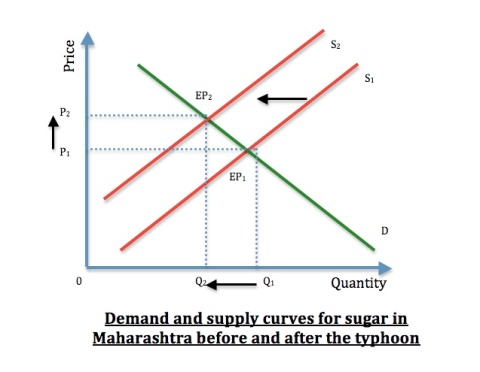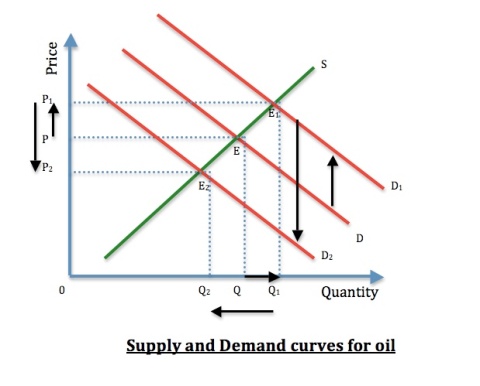Archive for the ‘2.1 Supply & Demand’ Category
Oil and its volatile price
Posted on: October 18, 2009
Sugar in India
Posted on: October 14, 2009

Maharashtra in India is the most dominant sugar-producing state, but the heavy monsoon in October 5th this year damaged an important part of the cultures. This leads to a decrease in the supply of sugar -less land can be farmed, by consequent the quantity farmed decreased. As we can see on the graph on the bottom, if the supply curves shifts to the left, the price will go up, and the quantity demanded will decrease. Since part of Maharashtra’s economy is based on the exportation of sugar, the economy will experience a deficit -less money earned from exportation, people’s income will decrease- and the population relying on the production of sugar will loose an important amount of money, leading to a decrease in the GDP.
Broad Social Goals
Posted on: September 15, 2009
We searched on two articles what were the broad social goals that economies should aim for.
These goals are:
- economic efficiency
- economic equity
- economic freedom
- economic growth
- economic security
- economic stability
We realized that no economy can have all of them at the same time, because too much of one can limit another; for example if there is too much freedom, then the stability is limited.
Market economies are doing better for mosst of the goals (efficiency, equity, freedom and growth) but command economies are better at security and stability (since the government decides everything, it makes sure that there is no unemployement and that everyone has pension, jobs, income…
Stability is the most important but also the hardest one to achieve. Maintaining stable prices and full employment while keeping the economic growth reasonably smooth and steady is really complicated.
I think all economies should aim toward freedom. It is important to be able to make your own choices. We realized in history that stopping people from having their own ideas does not do much good. If workers want to change job, they should be able to do it and no one should stop them.
